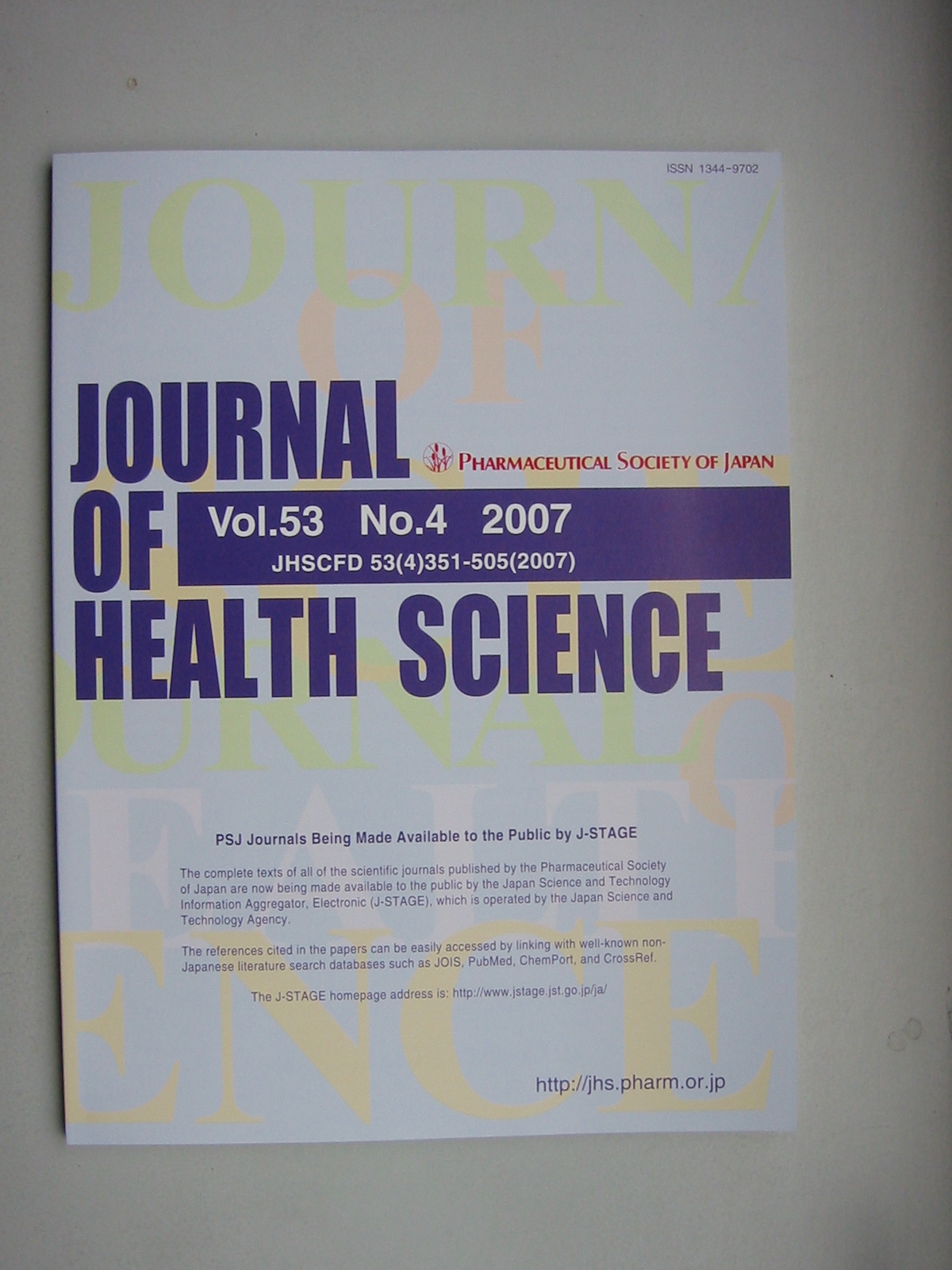Volume 48, Issue 1
Displaying 1-16 of 16 articles from this issue
- |<
- <
- 1
- >
- >|
MINIREVIEW
-
Article type: Minireview
2002 Volume 48 Issue 1 Pages 1-6
Published: 2002
Released on J-STAGE: February 28, 2002
Download PDF (426K) -
Article type: Minireview
2002 Volume 48 Issue 1 Pages 7-13
Published: 2002
Released on J-STAGE: February 28, 2002
Download PDF (133K) -
Article type: Minireview
2002 Volume 48 Issue 1 Pages 14-21
Published: 2002
Released on J-STAGE: February 28, 2002
Download PDF (176K)
REGULAR ARTICLES
-
Article type: Regular Article
2002 Volume 48 Issue 1 Pages 22-29
Published: 2002
Released on J-STAGE: February 28, 2002
Download PDF (171K) -
Article type: scientific monograph
2002 Volume 48 Issue 1 Pages 30-36
Published: 2002
Released on J-STAGE: February 28, 2002
Download PDF (169K) -
Article type: Regular Article
2002 Volume 48 Issue 1 Pages 37-41
Published: 2002
Released on J-STAGE: February 28, 2002
Download PDF (136K) -
Article type: Regular Article
2002 Volume 48 Issue 1 Pages 42-47
Published: 2002
Released on J-STAGE: February 28, 2002
Download PDF (573K) -
Article type: Regular Article
2002 Volume 48 Issue 1 Pages 48-54
Published: 2002
Released on J-STAGE: February 28, 2002
Download PDF (150K) -
Article type: Regular Article
2002 Volume 48 Issue 1 Pages 55-61
Published: 2002
Released on J-STAGE: February 28, 2002
Download PDF (343K) -
Article type: Regular Article
2002 Volume 48 Issue 1 Pages 62-68
Published: 2002
Released on J-STAGE: February 28, 2002
Download PDF (203K)
RAPID COMMUNICATIONS
-
Article type: Rapid Communication
2002 Volume 48 Issue 1 Pages 69-72
Published: 2002
Released on J-STAGE: February 28, 2002
Download PDF (135K)
RESEARCH LETTERS
-
Article type: Research Letter
2002 Volume 48 Issue 1 Pages 73-78
Published: 2002
Released on J-STAGE: February 28, 2002
Download PDF (159K) -
Article type: Research Letter
2002 Volume 48 Issue 1 Pages 79-82
Published: 2002
Released on J-STAGE: February 28, 2002
Download PDF (134K) -
Article type: Research Letter
2002 Volume 48 Issue 1 Pages 83-88
Published: 2002
Released on J-STAGE: February 28, 2002
Download PDF (158K) -
Article type: Research Letter
2002 Volume 48 Issue 1 Pages 89-92
Published: 2002
Released on J-STAGE: February 28, 2002
Download PDF (142K) -
Article type: Research Letter
2002 Volume 48 Issue 1 Pages 93-95
Published: 2002
Released on J-STAGE: February 28, 2002
Download PDF (142K)
- |<
- <
- 1
- >
- >|
